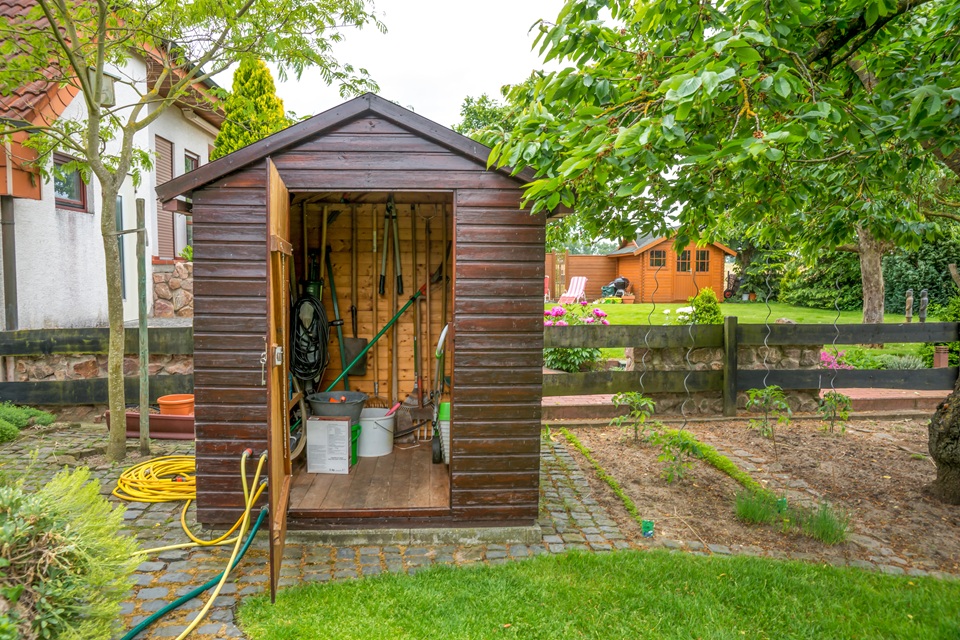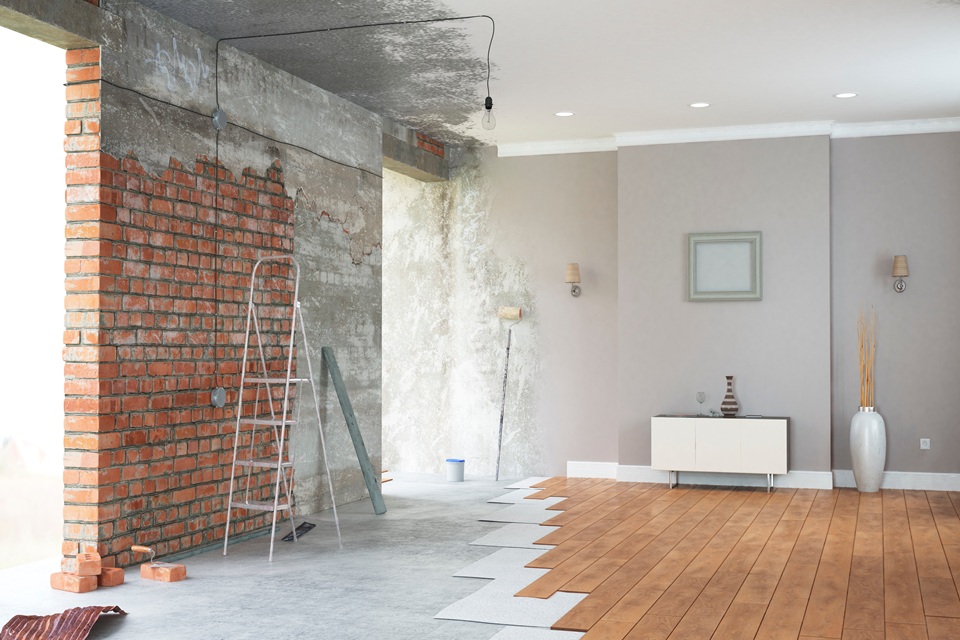Below, gardens expert Calum Maddock at HomeHow.co.uk goes over everything you need to know. So, take a look at some of the best ways to organise your shed for convenience and safety below...
Workbench Space
Space to work in your shed is a major requirement unless you only use it for storage. But even then, a bench serves a useful purpose. For many people, a shed is somewhere to do DIY or gardening chores such as potting plants. So, a bench at a good height is important.
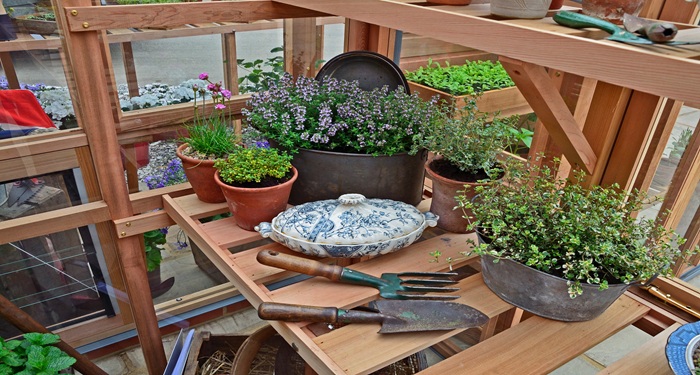
Make sure your workbench is sturdy and properly attached to the wall for stability and strength. Depending on what you’ll be using the bench for, choose a work surface that is the most appropriate for the task. For potting plants, a light material would be fine but for woodwork you may need something sturdier.
Essential Shelving
Shelving is a basic necessity in a shed. It gets things off the floor and your workbench and allows you to see what you have at a glance. There are lots of options for shed shelving. Wood and metal are the most common materials and there are plenty of purpose built shelving systems available for convenience.

It’s important to attach the shelves to the supports of your shed and not the walls which won’t be strong enough to hold much weight. Heavy duty L brackets are among the best. However, don’t be tempted to overload your shelves.
Garden Tool Racks
Having tidy garden tool storage is as much about safety as neatness. If you don’t have proper storage, your accumulation of shovels, rakes, spades and garden forks can become a mess. It makes pulling out the right tool tricky and can even be dangerous as a trip hazard.
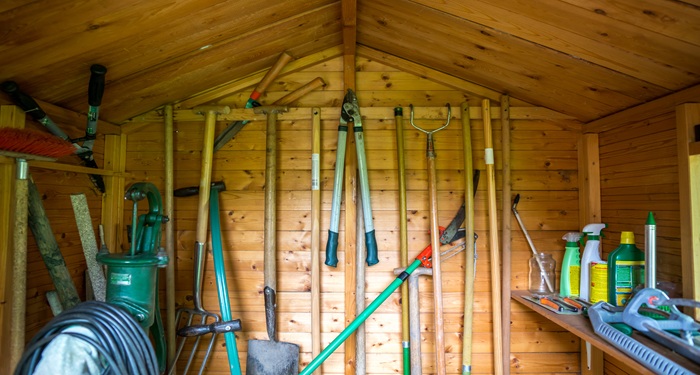
There are ready-made tool racks available, but it is a relatively simple task to make a homemade solution. This could be as simple as putting a parallel pair of screws into the wall to hang your tools from. Or use a pallet attached to one wall to pop all your gardening implements into.
Above Head Storage
Many people neglect the capacity for storage above their heads. This is often unused but useful space for keeping long or bulky items that don’t weigh much. This includes ladders, outdoor furniture cushions or timber offcuts. The support structure for this type of storage must be securely attached to the shed’s frame.

Make sure when installing your overhead storage, that you leave enough headroom especially once the space is occupied with whatever you are storing there, e.g., a ladder. Extra storage is useful but not worth a concussion.
Pegboards
Storing small hand tools on pegboards gives you a huge amount of flexibility and versatility. You can keep all small items stored conveniently above your workbench within easy reach. When you buy a new item, you can simply rearrange the hooks on the board to accommodate it.
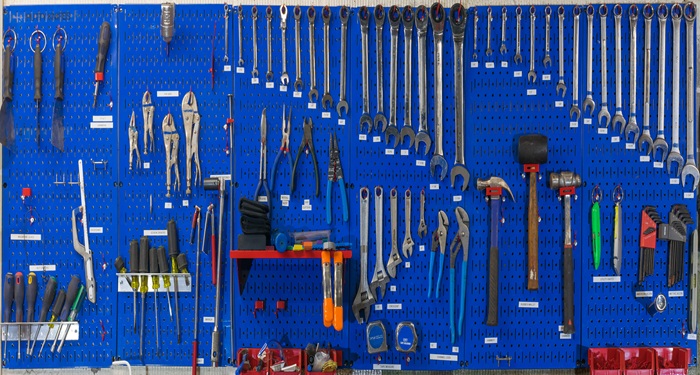
If your shed tends to get damp, a metal pegboard may be better than a wooden one. They also tend to last longer. Depending on the number of tools or amount of space available, you could put two or more pegboards up side by side.
Storage Boxes
For small, fiddly items such as screws, nails, drill bits and jigsaw blades, the best option is small storage boxes. You can use clear plastic containers so the contents are visible, taking the guesswork out of selecting what you need. You can also write the size of the screws or drill bits on the box in a permanent marker. These can then be stored on shelves, in drawers, or in purpose-built storage.

Larger storage boxes can be used for items such as outdoor furniture cushions. A sturdy box can also double as a handy seat in your shed.
Labelling
When storing things in boxes, it's important to properly label what's inside. The point of having an effective storage solution is to make life a little easier and more convenient. If you have to rummage through boxes because you've forgotten what you've put inside, it defeats the purpose.
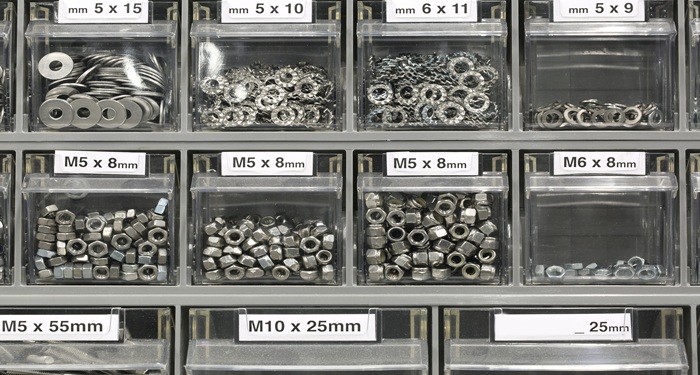
Use a permanent marker to write on boxes, use a label maker to assign a shelf space to a particular purpose or outline your tools on the pegboard so you can instantly see what is missing.
Group Items Together
When storing items in your shed, it makes sense to group them together. This could be screwdrivers, saws, chisels, shovels and spades. Whatever you’re using your shed for, if you have items that belong to the same or similar category, keep them together to make finding things quicker and easier.
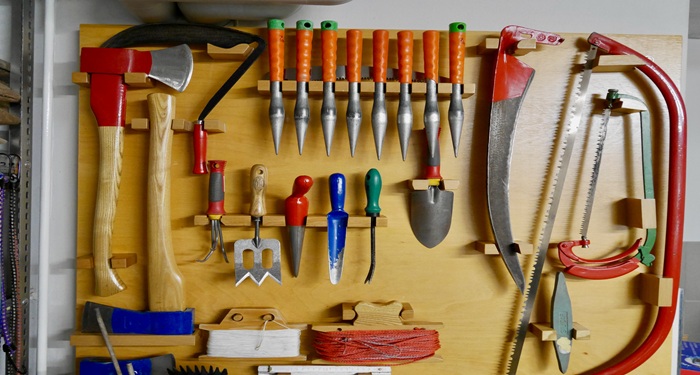
Many storage solutions give you this ready made option. For example, a screwdriver holder for a peg board or an oiled tool roll for chisels.
Magnetic Storage
Just like a magnetic knife rack in your kitchen, you can have a magnetic strip in the shed for a fast and effective storage solution for small tools. This could go above your workbench and hold things as diverse as tape measures and scissors, knives and spanners.
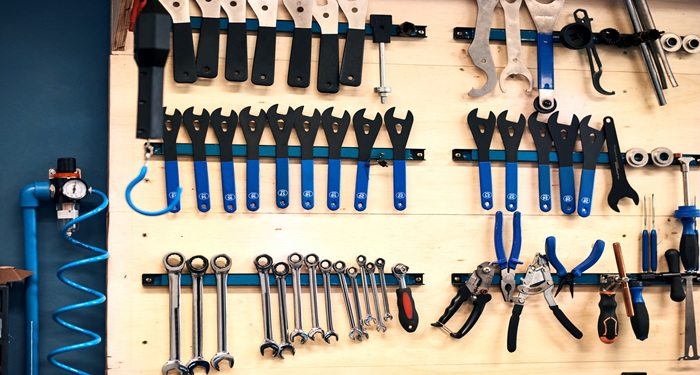
This keeps small items organised, off your workbench and easy to spot and access when you need them. You could install two or three of these strips side by side, depending on how much storage you need.
Wheels for Heavy Items
When you have heavy items to store in your shed like bags of soil or a particularly heavy machine, it’s a good idea to put it on wheels. You can either buy a mini trolley to store things on or make your own from a sturdy piece of wood and some castors.
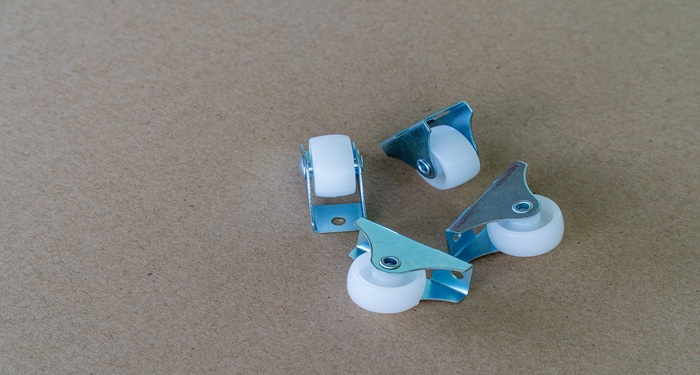
If you’re going to be moving this item around a lot, consider adding a lip of additional timber around the edges to stop it sliding off as you move it.

